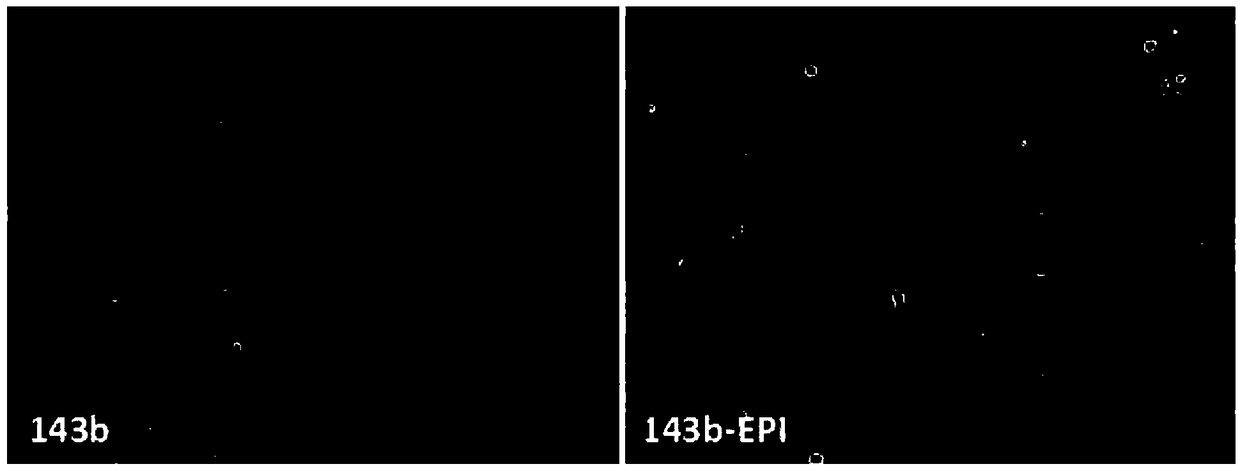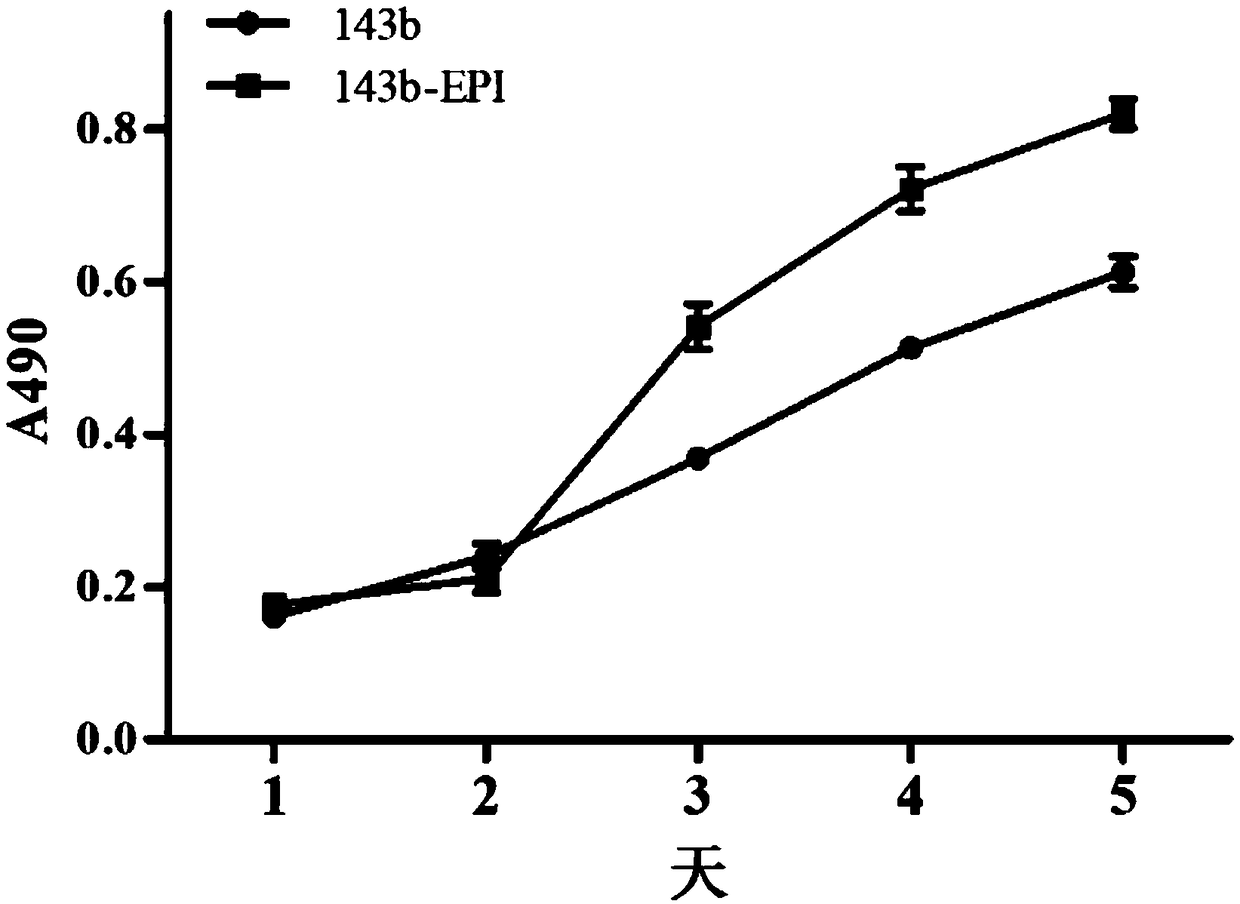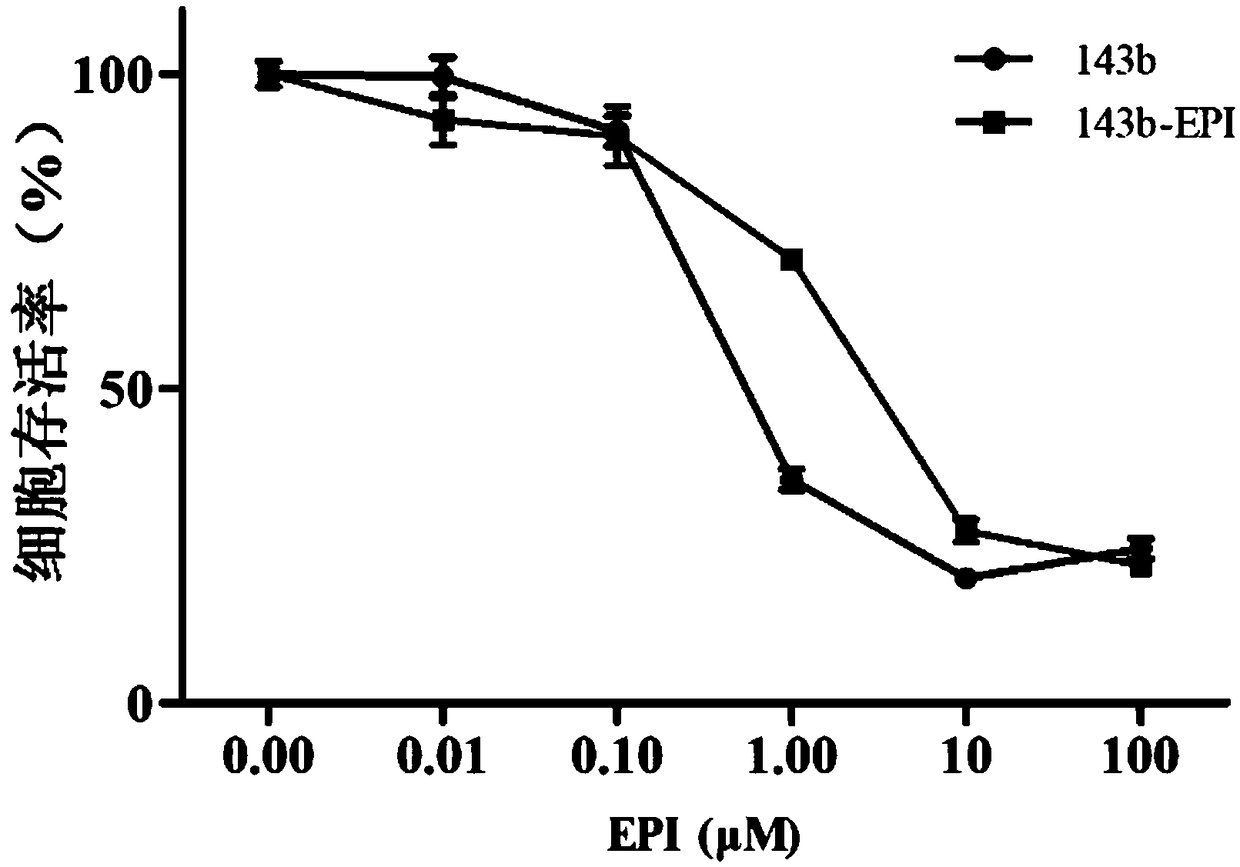Establishing method of osteosarcoma EPI (Epirubicin) drug-resistant cell line
A technology of epirubicin and drug-resistant cells, applied in the medical field, can solve the problems of long time-consuming, unstable tolerance, passive treatment of osteosarcoma patients, etc., and achieve the effect of short construction period and stable drug resistance
- Summary
- Abstract
- Description
- Claims
- Application Information
AI Technical Summary
Problems solved by technology
Method used
Image
Examples
Embodiment 1
[0038] Example 1 Construction of epirubicin-resistant cell lines for osteosarcoma
[0039] Human 143b cells in the logarithmic growth phase were inoculated in DMEM medium containing 10% FBS at 37°C and 5% CO 2 cultured in a saturated humidity incubator. Add an appropriate amount of epirubicin to the culture medium for induction, the initial concentration is 5nM / L, when the cells return to normal growth, increase the concentration by 5nM / L, when the cells can grow normally and pass on at a concentration of 20nM / L, use 40nM / L EPI shock culture for 10h, immediately replace the medium with an EPI concentration of 20nM / L and culture for about a week, when the cells grow stably and pass passage, shock again until the cells can grow in 40nM / L EPI, and then culture at 10nM / L The concentration of L is increasing. When the cells can grow and pass normally at a concentration of 80nM / L, shock induction with 120nM / L EPI for 10h, immediately replace the medium with an EPI concentration of ...
Embodiment 2
[0040] Morphological characteristics comparison of embodiment 2 human 143b cells and 143b-EPI cells
[0041] The morphology of 143b cells before and after epirubicin induction was observed with an inverted phase-contrast microscope, and photographed and recorded. The result is as figure 1 As shown, 143b is mainly short-spindle-shaped with sharp edges and corners, while 143b-EPI is mainly long-spindle-shaped, and some cells are obviously elongated, suggesting that the morphology of cells has changed significantly after induction.
Embodiment 3
[0042] The growth comparison of embodiment 3 people's 143b cell and 143b-EPI cell
[0043] Take the 143b in the logarithmic growth phase and the drug-resistant 143b-EPI cells respectively, trypsinize and resuspend the cells in DMEM complete culture medium, and adjust the density to 3×10 4 cells / mL, inoculated in 96-well plate, 100 μL per well. Set up 5 replicate wells in each group and place at 37°C, 5% CO 2 Cultivate overnight in a saturated humidity incubator, add an appropriate amount of EPI to the two types of cells the next day, the final concentration is 20nM / L, and culture them in the incubator for 5 days. curve. like figure 2 As shown, the two kinds of cells grew slowly in the first two days, and on the third day, the growth of 143b-EPI accelerated and entered the exponential phase, while the growth of the parental cell 143b was relatively stable, and the exponential phase was not obvious. In general, under the condition of 20nM / L EPI, drug-resistant cells 143b-EP...
PUM
 Login to View More
Login to View More Abstract
Description
Claims
Application Information
 Login to View More
Login to View More - R&D Engineer
- R&D Manager
- IP Professional
- Industry Leading Data Capabilities
- Powerful AI technology
- Patent DNA Extraction
Browse by: Latest US Patents, China's latest patents, Technical Efficacy Thesaurus, Application Domain, Technology Topic, Popular Technical Reports.
© 2024 PatSnap. All rights reserved.Legal|Privacy policy|Modern Slavery Act Transparency Statement|Sitemap|About US| Contact US: help@patsnap.com










